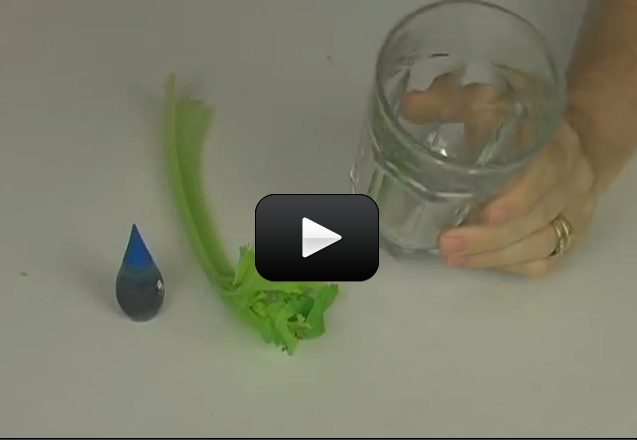If you think of celery as being a bundle of thin straws, then it’s easy to see how this experiment works. In this activity, you will get water to creep up through the plant tissue (the celery stalk) and find out how to make it go faster and slower.
The part of the celery we eat is the stalk of the plant. Plant stalks are designed to carry water to the leaves, where they are needed for the plant to survive. The water travels up the celery as it would travel up any plant.
Please login or register to read the rest of this content.


It could just be the kind of food dye that you used. You can try to use a different brand or try to use a little more. Also, be sure your celery is fresh from the store.
We tried this experiment, but the colors didn’t show as well as in the video. What could be the problem?
It’s not a good idea to eat ANY science experiment/ If you’re hungry, make yourself a snack first, THEN do science!
Can you eat the celery still, Like with butter?
When you place the potato in salt water, it expands as the water is drawn into the cells. Salt water makes potatoes grow in size but shrink in mass, so you need to measure both volume and mass to accurately describe what’s going on.
Here are some tips for the experiment:
1. Remove the skin and cut two pieces and measure it accurately before trying this again. If you make your pieces cylinders or rectangles, it’ll be much easier to calculate the volume.
2. Weigh each potato sample accurately and record the mass on your data table.
3. Calculate the density of each piece by dividing the mass by the volume.
4. Put one potato in fresh water and the other in salt water for the same length of time, at least 24 hours.
When I did this, my fresh water sample decreased by half its original density, and my salt water sample decreased by less than 1/3 of its original density. The sample in salt water grew much more than the one in fresh water.
Not really, but I think you could try a flower stem… you want something with long fibers that will show the food dye as it progresses.
Is there another vegetable I could use for this experiment?
Thank you! Juliette (13)
I’ll have my team connect with you right away!
Can I please have access to the celery stalk experiment? Thank you!
Hello, I clicked on the Grade 7 curriculum and this came up under that grade level. I am not sure why I don’t have access to it if you have it listed under grade 7. I happen to have fresh celery in my refrigerator so I wanted to do this lesson.
Thank you and have a nice day! Sarah